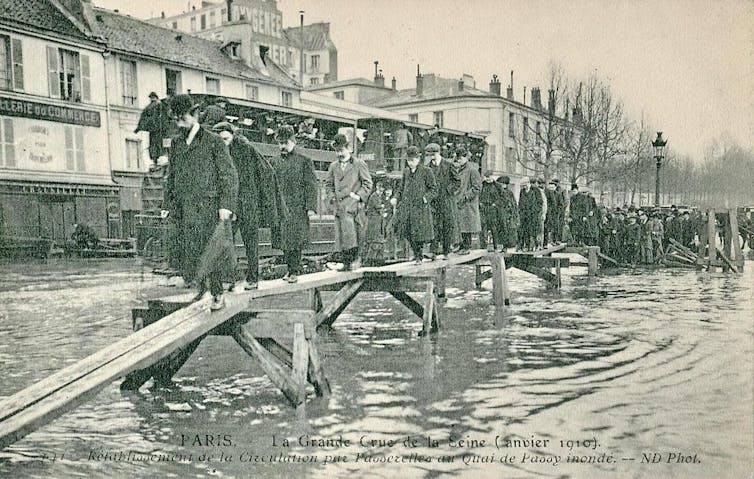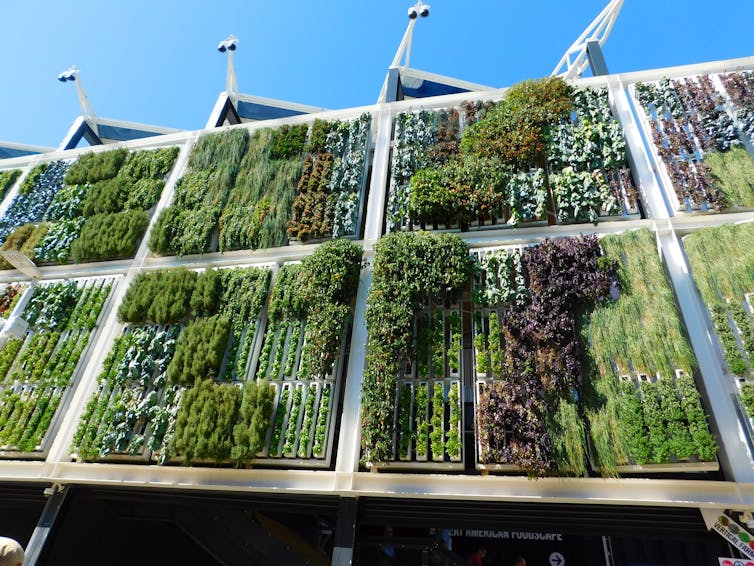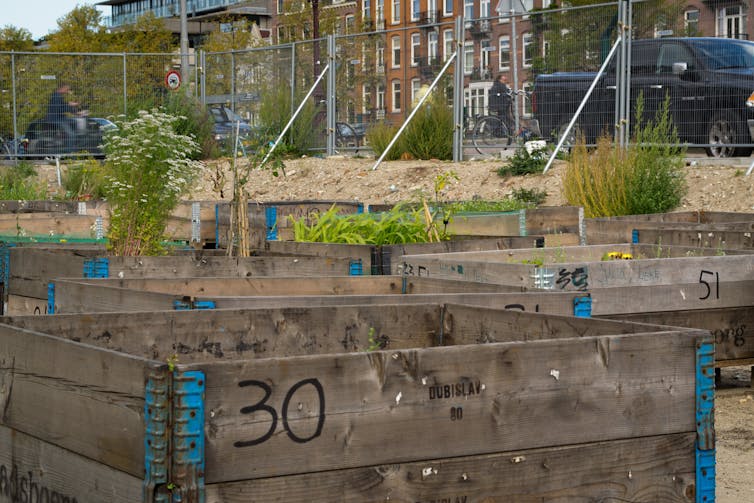When climate comes unhinged, we need to re-think how to build our cities
By Dagmar Haase, Professor of Landscape Ecology, Humboldt Universität zu Berlin, Helmholtz Centre for Environmental Research-UFZ
In late January 2018, Paris seemed to be drowning. Both the Seine and the Marne rivers , forcing some suburban city-dwellers to have to row to reach their houses, while the iconic Zouave statue on the Pont d’Alma was even . That was just before snow engulfed the French capital.
Rising waters in the Lyon region as well as in the north-east near Strasbourg, where the Rhine river (which also flow through Germany) was extremely high. A new normal? , “flood damage from rivers in Europe will more than double to about 15 billion euros ($19 billion)” as a result of global warming. Flooding will even if we manage to keep global warming below the 1.5 Celsius degree recommended by the .

Cities in Europe will suffer from heat and heat waves as well as from extreme rainfall which will be a new challenge for planners and health care services. to avoid catastrophes. While reducing carbon emissions is key to tackle the global issue there are various ways to make cities more resilient.
Informing people
Informing people about approaching heat waves is one important issue. Doing so, all possible information and communication sources should be activated. Apps, social networks such as WhatsApp or Facebook groups can prove handy provided they are used with consistency as explained by social scientists observing in .
Use of everyday infrastructure such as supermarkets, pharmacies and cafés can also help. In Vienna, during the heat waves in 2015 and 2017.
During catastrophe such as heat waves, dedicated should be implemented. It could be helpful for health or social workers to localize older people and by high temperatures. Thousands of senior citizens died in France . In France, “La Poste”, the official public mail service, launched last summer . It offers individuals to look after an isolated parent against a compensation.
Blue and green cities
can also become a new norm when we talk of planning and building.
These practices bring nature back into the built space and make use of its great properties to balance heat and also heavy rainfall by filtration, absorption, percolation and seeping functionality. Open soils in parks, on lawns, in cemeteries or urban gardens are highly suitable for this but also green roofs, rooftop raingardens or green walls. All buffer heat and emit transpiration coolness.
We can think for instance of rain gardens and green houses , which already proved useful in New York, as they could absorb .

Revitalized brownfields and their conversion into large public parks and greenspaces can become a hit such as the urban farms set up , in , Malmö or Leipzig in Sweden just to . It can also take the shape of – linear vegetated channels, specifically designed to attenuate and treat storm water runoff.
Trees and forests, in addition, also emit essentials which are good for human’s lung function and respiratory power. Thus, green spaces have great synergies to balance heat, heavy rainfall and transport emissions (particles, nitrogen oxides).
Blueing the city means to increase open water surfaces and create areas which can be flooded (in the Seine wetlands for example) or where water can stand. in case wetlands or riparian areas are not available or totally embanked.
These practices help build what we call .
Toward resilient cities
A resilient city in terms of its eco-climatological conditions is a city which takes into consideration what I sketched above and which holds areas for greening and blueing and invests in an excellent and flexible information/communication network.
In addition, complementaries between green, blue and built (grey) infrastructure should be taken into consideration and not mutually ignored. For example, dams are sometimes necessary as bioswales can only take up a certain amount of water.
Beyond technical considerations, we also need to take into account the political aspect of a resilient city : first and foremost, it is a space where citizens should all access the necessary information to mitigate catastrophe, free of charge, as a civil and municipal service.

These basic adaptation practices will complement more technical and green solutions such as flood protection in Vienna or Cologne .
For instance, after Germany’s , dikes were relocated and modified to broaden the natural floodplain and to give the river more room. .
That is why, instead of blocking the water, other cities think to welcoming it. For instance, the city of Hamburg, in the Netherlands for river Elbe to restore “some natural balance to a dockland area”, which has been under stress for half a century due to heavy ship traffic.
Of course a large 100-years flood cannot be buffered or balanced by bioswales or lawns along a floodplain; but it can reduce peaks and make flood velocity lower and give people more time to react.
![]()